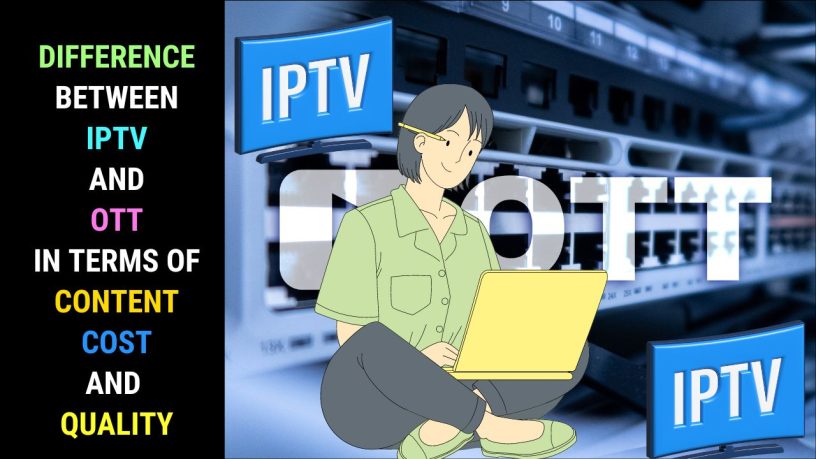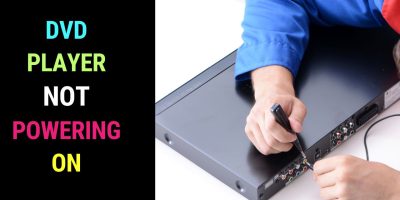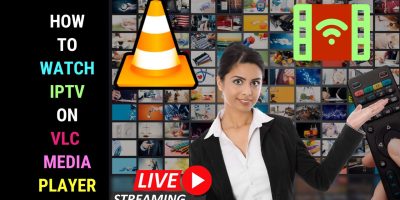Last updated on January 23rd, 2024 at 02:17 am
IPTV (Internet Protocol TV) provides video content through a dedicated network and requires a set-top box to function. OTT (over-the-top) delivers video content directly over the Internet and doesn’t require a set-top box to receive video content.
Faster Internet speeds have made video streaming popular over the years.
If you’re new to the video streaming game you may be wondering about the difference between IPTV and OTT.
Let’s quickly look at the difference between these two modes of video streaming. It would help you decide the type that suits your needs.
IPTV
IPTV offers television programming through an Internet protocol, namely, Transmission Control Protocol/Internet Protocol (TCP/IP). TCP/IP is a networking protocol that facilitates communication between two computers.
Dedicated Network
An IPTV service is delivered to subscribers through a dedicated network. This is usually done through a Digital Subscriber Line (DSL) connection.
DSL is a technology through which high-bandwidth data like video is transmitted through telephone lines.
In most instances, an IPTV service comes bundled with an Internet and landline telephone package. In such cases, the IPTV doesn’t use the Internet service to stream video. Instead, it has a separate network to stream video, as explained above.
So, if you’ve subscribed to an Internet-IPTV package, you won’t have to worry about your Internet connection slowing down while watching IPTV.
IPTV uses a separate dedicated connection and not the Internet service you’ve subscribed to.
This separate high-speed Internet connection ensures that you receive high-quality service minus issues like video buffering.
Set-Top Box
As explained above, an IPTV service would require a set-top box connected to your router to receive TV content.
This would usually be supplied by the IPTV provider. Installation, too, will be done by the IPTV team.
The set-top box is usually provided free in exchange for a contract you sign with the IPTV provider.
When your contract ends and you decide not to continue with the service, you’ll have to return the set-top box to the IPTV provider.
Video Content
Most IPTV services offer you live TV programming and VOD (video on demand) services.
You get to watch TV shows just like you would over cable or satellite. In addition, you also get to watch movies and other shows not included in day-to-day TV programming.
You may have to pay separately for the VOD content.
Reach
IPTV services are more or less localized. They’re available only in a particular region or country.
Subscription
IPTV services require you to commit to a long-term contract. They are usually more expensive than OTT services.
OTT
OTT content is delivered over the public Internet. As such it can be accessed without a set-top box.
Multi-Device Access
OTT content can be accessed through a variety of devices through apps. This would include TV boxes, smartphones, tablets, smart TV, and even gaming consoles. When using a computer, OTT services can be accessed through a web browser.
Smart TVs come with pre-installed OTT apps.
Examples of OTT services include Netflix, Prime Video, Curiosity Stream, and Peacock, among others.
These services can be accessed through OTT TV boxes.
Subscription
Unlike IPTV services OTT services don’t require you to sign a long-term contract. Netflix for instance offers monthly packages you can cancel at any time.
There are also free OTT services that come with ads. Examples include Tubi, Vudu and
Check out more free OTT services.
Reach
OTT services often extend their offerings worldwide. For example, Netflix and Prime Video are available all around the world.
Disadvantages
Since OTT services are available over public Internet, streaming quality isn’t guaranteed.
One thing is certain. You need a high-speed broadband connection. Usually, a minimum speed of 3O Mbps is recommended for viewing.
If you don’t have a fast, stable Internet connection, you’ll not get a pleasurable OTT experience. Prepare to put up with disconnected service and video buffering for slower, unstable connections.
Also, you don’t get to enjoy local TV shows and news. You can also forget about accessing live sports action.
Which to Choose?
By now you would have understood the difference between IPTV and OTT.
If you would like to watch live TV shows, news, and live sports you could opt for an IPTV service.
If you would like to catch movies wherever and whenever you like, go for an OTT service.
Frequently Asked Questions
Is YouTube an OTT Platform?
No, YouTube isn’t an OTT platform. YouTube is a social video platform. Users share videos and interact with each other.
Video content isn’t curated or packaged over YouTube. You choose the content you watch.
Can You Enjoy OTT Services through an IPTV Service?
Some IPTV services allow you to subscribe to selected OTT services through your IPTV account. However, you can only access a limited number of OTT services.
Subscription, however, must be done through the IPTV service and payment made to them.
Usually, OTT subscriptions through an IPTV service are much cheaper than direct subscriptions.



